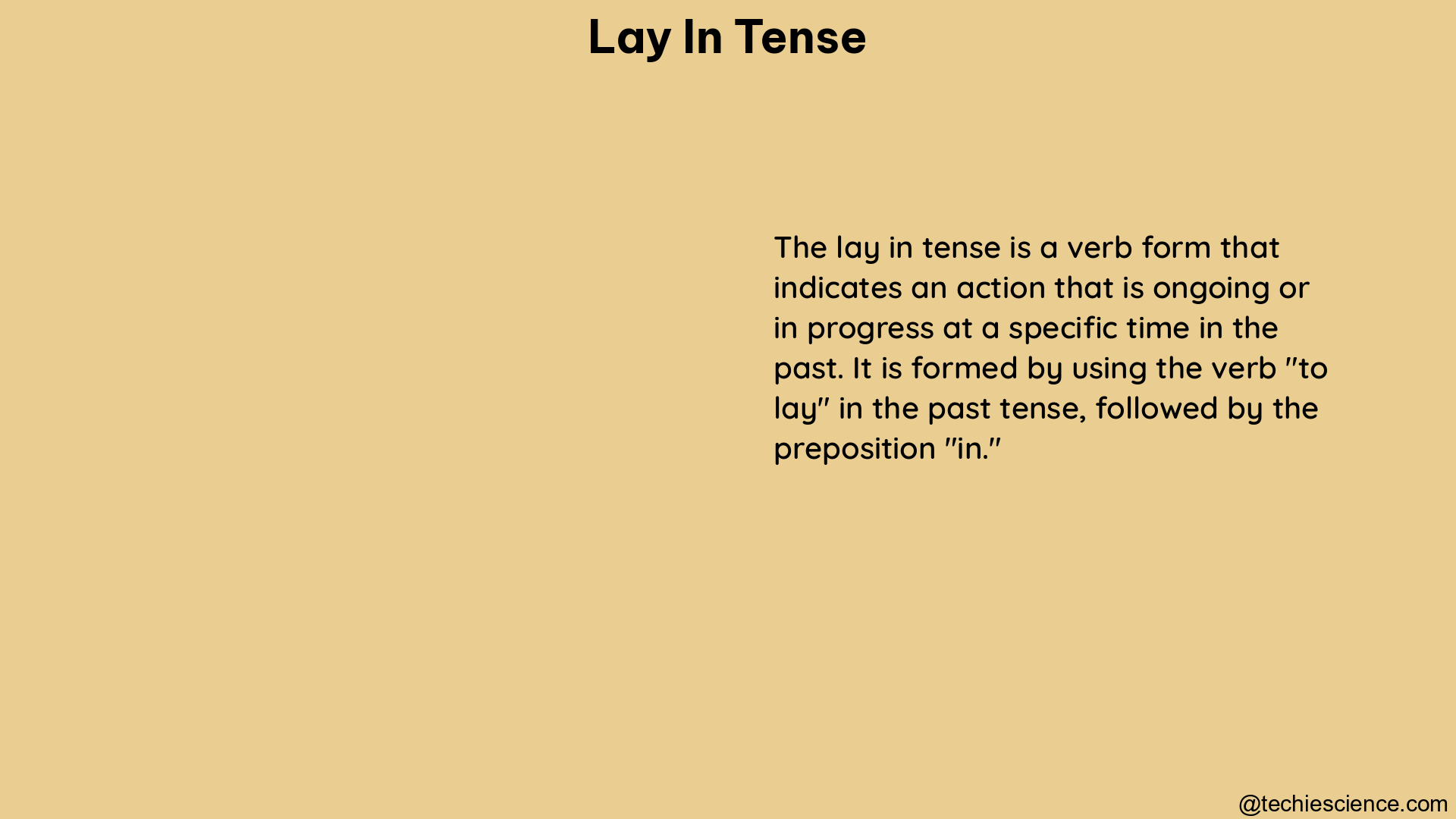The verb “lay” can be a tricky one to navigate, especially when it comes to its various tenses. This comprehensive guide will provide you with a deep understanding of the lay in tense, including its usage, examples, and common mistakes to avoid. Whether you’re a student, a writer, or simply someone who wants to improve their English language skills, this guide will equip you with the knowledge you need to confidently use the lay in tense.
The Present Tense of Lay
The present tense of the verb “lay” is a transitive verb, meaning it requires a direct object. It is used to describe the action of putting or setting something down.
Example:
– I lay the book on the table.
In this sentence, “book” is the direct object that is being laid on the table.
The Past Tense of Lay

The past tense of “lay” is “laid.” It is still a transitive verb, meaning it requires a direct object.
Example:
– I laid the book on the table yesterday.
In this sentence, “book” is the direct object that was laid on the table in the past.
The Past Participle of Lay
The past participle form of “lay” is also “laid.” It is used in conjunction with helping verbs like “has” or “had” to describe an action that has been completed.
Example:
– I have laid the book on the table.
– The book had been laid on the table by the time I arrived.
In these sentences, “laid” is the past participle form of “lay” used with the helping verbs “have” and “had.”
The Present Participle of Lay
The present participle form of “lay” is “laying.” It is used to describe an ongoing action.
Example:
– I am laying the book on the table.
In this sentence, “laying” is the present participle form of “lay” used to describe the action of putting the book on the table.
Common Mistakes with Lay
- Confusing “lay” with “lie”:
- Incorrect: “I lay down to take a nap.”
- Correct: “I lie down to take a nap.”
-
Explanation: “Lie” is an intransitive verb, meaning it does not require a direct object. “Lay” is a transitive verb, so it requires a direct object.
-
Using the wrong past tense form:
- Incorrect: “I layed the book on the table.”
- Correct: “I laid the book on the table.”
-
Explanation: The past tense of “lay” is “laid,” not “layed.”
-
Mixing up the present and past participle forms:
- Incorrect: “I have lain the book on the table.”
- Correct: “I have laid the book on the table.”
-
Explanation: The past participle form of “lay” is “laid,” not “lain.” “Lain” is the past participle form of the verb “lie.”
-
Forgetting the direct object:
- Incorrect: “I lay down for a nap.”
- Correct: “I lay the book down on the table.”
- Explanation: “Lay” is a transitive verb, so it requires a direct object. In the incorrect example, “lay” is being used as an intransitive verb, which is incorrect.
Helpful Tips for Mastering the Lay in Tense
- Memorize the different forms of “lay”: Present tense (lay), past tense (laid), past participle (laid), and present participle (laying).
- Practice using “lay” in sentences: Regularly practice constructing sentences using the different forms of “lay” to reinforce your understanding.
- Distinguish between “lay” and “lie”: Remember that “lay” is a transitive verb that requires a direct object, while “lie” is an intransitive verb that does not.
- Consult reference materials: Refer to grammar guides, online resources, and dictionaries to clarify any doubts or questions you may have about the lay in tense.
- Pay attention to context: The correct usage of “lay” often depends on the context of the sentence. Be mindful of the overall meaning and structure of the sentence when using “lay.”
Reference:
- Writer’s Digest – Lay vs. Lie vs. Laid vs. Lain
- Grammarly – Lay vs. Lie
- Merriam-Webster – How to Use ‘Lay’ and ‘Lie’

Hi…..I’m a graduate with a Bachelor’s degree in English Literature. I wish to do a Masters in the same field someday and continue my career in Academia.
Let’s connect through LinkedIn: